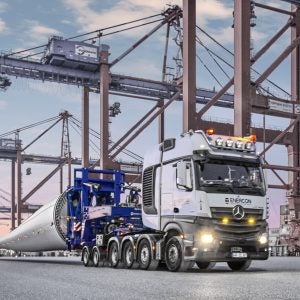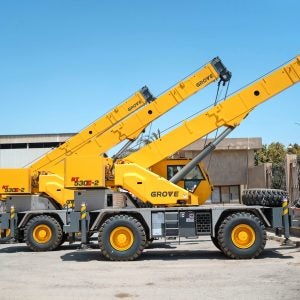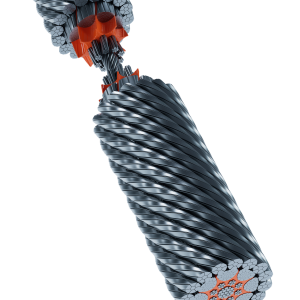Rexroth is showing its Green Valve concept for load-holding and lowering valves, which it says makes, “mobile equipment more energy efficient and easier to control.”
Rather than using engine power to help lower booms, the new concept uses the force of gravity instead. This decreases power requirements, saves fuel and cuts emission, Rexroth says.
Using a counterbalance valve when lowering a boom requires more engine power to build up the pressure needed to open the valve. “It’s not uncommon to use 100 and even up to 240bar in machines such as telehandlers, backhoe loaders, or cranes,” according to Rexroth. This can require 55kW or more, depending on parameters like cylinder position, the desired speed of movement or the pilot ratio of the counterbalance valve.
The new Green Valves, Rexroth said, all but eliminate the need for heightened pressure and oil flow by using gravity to help lower a loaded or unloaded boom. More oil flow is available for faster execution of other simultaneous movements, and this can further shorten machine cycle times for better performance, it explains.
The new load-holding valves are suitable for any type of hydraulic circuit, and interchangeable with current Rexroth counterbalance valves.
Another new product Rexroth is highlighting is Diesel Hydraulic Control (DHC). Developed with Bosch, this electric BODAS system combines hydraulics and diesel engine control for higher dynamics at lower engine speeds. Rexroth says it reduces diesel fuel consumption by up to 20%.
Developed with the “expected poorer load response of Tier 4 Final diesel engines in mind, DHC retains the, “accustomed lively response”, of the travel drive and implement hydraulics, even under conditions of diminished load response and lower engine speeds.
The new concept is to let the diesel engine know of expected load requirements through matched controllers: one for engine management and one for the travel drive and implement hydraulics. These use a common map representing the vehicle specific relationships between rpms, efficiency and torque.
“DHC continuously determines the demands of the travel drive and implement hydraulics and uses this information to dynamically calculate the optimal operating points for the diesel engine and hydraulic components by means of the DHC system map,” Rexroth explains.
“The joystick for the implement hydraulics, for example, transmits pending work requirements directly to the DHC, which in turn passes this requirement to the diesel ECU. This allows the engine time to prepare for the imminent mechanical load.”
Because the new system makes it possible to operate equipment at accustomed response levels despite lower engine speeds, users will save fuel.






